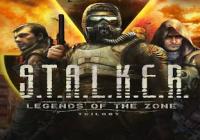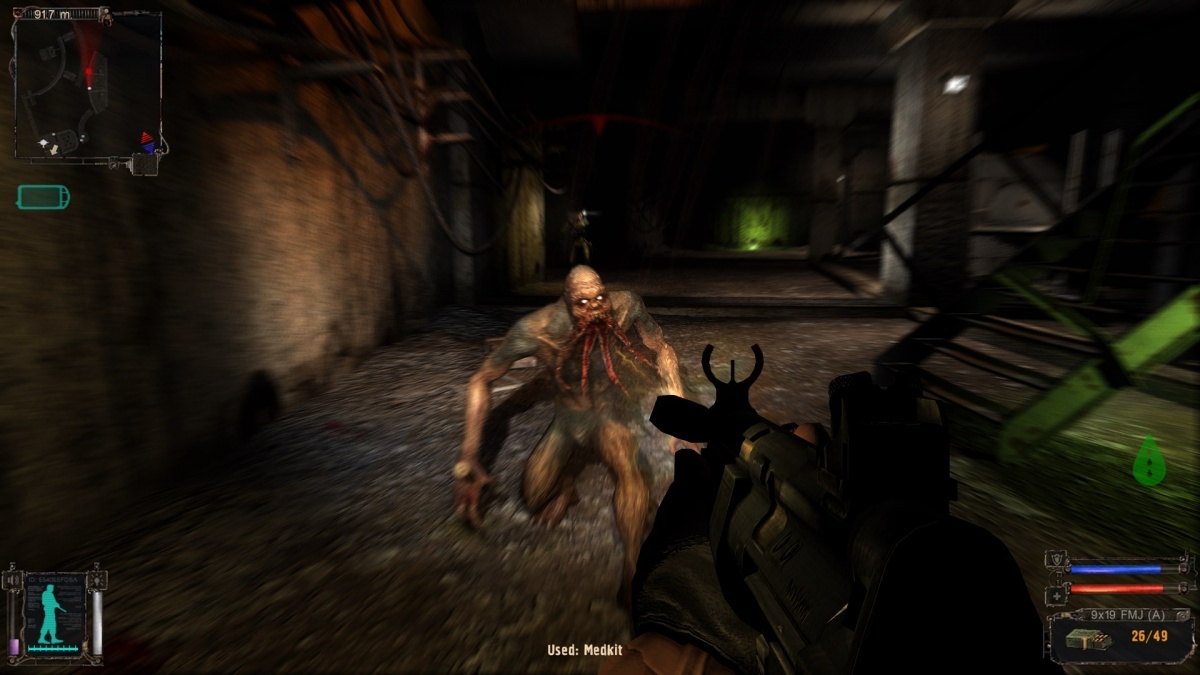STALKER: Legends of the Zone Trilogy (Xbox Series X/S) Review
By Coller Entragian  19.11.2024
19.11.2024

Before Fallout 3 became the de-facto model for modern open-world, post-apocalyptic western RPGs with a distinct nuclear motif, there was S.T.A.L.K.E.R.. This was about a full year before Bethesda would dominate the industry with their vision on consoles, but in 2007, PC gamers would get to enjoy an entire trilogy of back-against-the-wall-style survival-horror set in the disastrous Chernobyl Exclusion Zone. These titles emphasized reactive gameplay and heavy survival mechanics set in large open-ended areas, and it would be on the players to manage their faction allegiances, as well as managing hunger stats and trying to not get radiated. If the harshness of the zone, or mutants don't kill then maybe the game's bugs will. How has the S.T.A.L.K.E.R. trilogy held up since its release? How have they been converted to consoles? Find out in this S.T.A.L.K.E.R.: Legends of the Zone Trilogy review!
It is impossible to review the S.T.A.L.K.E.R. (Scavengers, Trespassers, Adventurers, Loners, Killers, Explorers, and Robbers) games without bringing up that it is a part of one of the strangest "franchises" ever. Everything goes back to the book Roadside Picnic by the Strugatsky brothers and its premise revolves around extra-terrestrials making pitstops on Earth and leaving their junk. Hyper advanced alien garbage turned out to be so beyond human comprehension that some pieces of their refuse could have various reality altering effects or even be deadly.
The dumping grounds for these alien artefacts became known as "the zone". This would attract urban explorers who would try to brave the wasteland in order to acquire an artefact of their own and try to sell it. This book became the basis for the 1979 film Stalker, which took liberties with the premise and made it into an avant-garde sci-fi story about faith and love. While it forgoes the alien artefacts for a mystical room that will grant the innermost desire, the film inspired the visual look and feel for the S.T.A.L.K.E.R. video game franchise.
Anyone who thought the 1979 film lacked action or gun battles, then S.T.A.L.K.E.R.: Legends of the Zone Trilogy will satisfy that itch. The three games included in this compilation are S.T.A.L.K.E.R.: Shadow of Chernobyl, S.T.A.L.K.E.R.: Clear Sky, and S.T.A.L.K.E.R.: Call of Pripyat. Each title has had slight graphical improvements for this collection and all boast 60 frames per second. While these games were notoriously buggy upon their release in 2007, there has been some work done to them to make them a tad more stable. For better and for worse most of the bugs and glitches are still present, but this is also part of the S.T.A.L.K.E.R. experience.

Shadow of Chernobyl is the genesis and it begins with the protagonist being saved by a mysterious unnamed stalker who is never seen or heard from again. Upon waking up, the player character has amnesia and only one clue to go off of; a message in his PDA with the order, "Kill Strelok". From here on, the protagonist is known as "the marked one", due to his stalker tattoo and is set loose into The Zone. Shadow of Chernobyl is ambitious for what it is and when it was released. It has seven endings which vary depending on the actions taken during the course of the events and the structure of the game is extremely sandboxy. There is very little hand holding and figure things out for oneself is highly encouraged.
There are multiple large biomes with distinct landmarks, locales, and various factions or NPCs to interact with. One of the major selling points was the stalker ranking which shows every agent in the game. This was important because it gives a greater sense of The Zone and how to rise up the ranks. This was usually done by completing story missions, finding alien artefacts/anomalies, or helping out stray stalkers who might be down on their luck.
S.T.A.L.K.E.R.: Clear Sky follows Scar, a mercenary whose assignment is to thwart a group of stalkers from reaching the heart of The Zone. The story is as hands-off as Shadow of Chernobyl and it features many of the same locations with some remixed elements. Where Clear Sky differs is the new areas and emphasis on weapon customization, plus how the different factions will autonomously battle for territory. These situations push stalkers into choosing sides in order to secure the area, but the point is that the side worth fighting for will not always be the one that has been previously friendly. This instalment pushes protagonists into becoming a traitor or choosing honour, and these moments matter because whichever side controls the territory also determines the items in the shops and side quests.

Call of Pripyat was the third and final entry released in 2009. After a large-scale military operation involving helicopters sent for recon mysteriously crashes, players assume the role of Major Alexander Degtyarev, a skilled stalker and undercover SBU agent, who is tasked to investigate the wreckage. Investigating the crash sites Degtyarev discovers the helicopters were brought down by powerful electrical discharges, not a typical Zone anomaly. These massive discharges are not just a part of the story, but are a major pillar to the gameplay experience too. During the typical survival-horror time in The Zone there are random occurrences of these storms and they utterly melt whoever gets caught in one.
Trying to survive while witnessing the oncoming rise of a huge electrical emission means having to improvise a shelter or injecting drugs that shut down the nervous system. These moments become intense as the sky turns red and vicious mutants are drawn to the area. When the emission ends, this usually results in more anomalies in the vicinity and that means artefacts, which are the main reason why The Zone attracts stalkers.
The artefacts are present in all S.T.A.L.K.E.R. games and they are effectively magical in nature and can have various properties. These can be equipped and have both beneficial and negative effects, usually resulting in massive doses of radiation. Most of the time the negative effects are too much of a liability and artefacts are better off sold for money to buy better gear.

Visually, S.T.A.L.K.E.R.: Legends of the Zone Trilogy games all look consistent with each other and are not a dramatic leap from their vanilla releases in the mid to late 2000s. The environments look excellent, but the models definitely look their age. A special mention must be given to the sound design. Most of the NPCs will speak Russian and it goes a long way in creating the atmosphere in the game. While most who play this won't know what they are saying or catch the jokes they tell amongst themselves, the matter-of-fact bluntness of The Zone is palpable. There is a loneliness to The Zone and the way a stray stalker will play the guitar in the distance adds a melancholic feel. It always feels like there is a dying animal wailing somewhere over a hill or behind a wreck.
S.T.A.L.K.E.R.: Legends of the Zone Trilogy is a worthwhile package with three substantial campaigns. Each one offers something that justifies its existence. There is no denying that these aren't the most polished games. The AI can sometimes give up in Shadow of Chernobyl and Clear Sky, but by the time Call of Pripyat, the gameplay got much tighter and more reliable. There can be instances of important NPCs who die and will need to be spoken to, but dead men give no quests. Other times the menus won't work or the map wigs out. Regretfully, these issues seem to be too deeply rooted to fix since they've persisted since the 2000s. Thankfully, most of the time a fix is just a quick reload of a past save... always save often, kids.

Cubed3 Rating
Great - Silver Award

In spite of its technical issues, S.T.A.L.K.E.R.: Legends of the Zone Trilogy is still an engrossing and tense collection of some of the best twitch-based survival-horror action RPG that also happens to be set in a radioactive Russian wasteland. The atmosphere in these titles are some of the best executed and the gameplay is very deep when it works. It is fair to see why many prefer S.T.A.L.K.E.R. over Metro since it offers an immersive sim-like experience on an ambitious scale for its time, while also having just enough magical elements that keep the universe a little bit of a mystery.

![]() 8/10
8/10
![]() 0
(0 Votes)
0
(0 Votes)
 Out now
Out now  Out now
Out now  Out now
Out now  Out now
Out now Comments
Comments are currently disabled

 Sign In
Sign In Game Details
Game Details Subscribe to this topic
Subscribe to this topic Features
Features






 Top
Top

